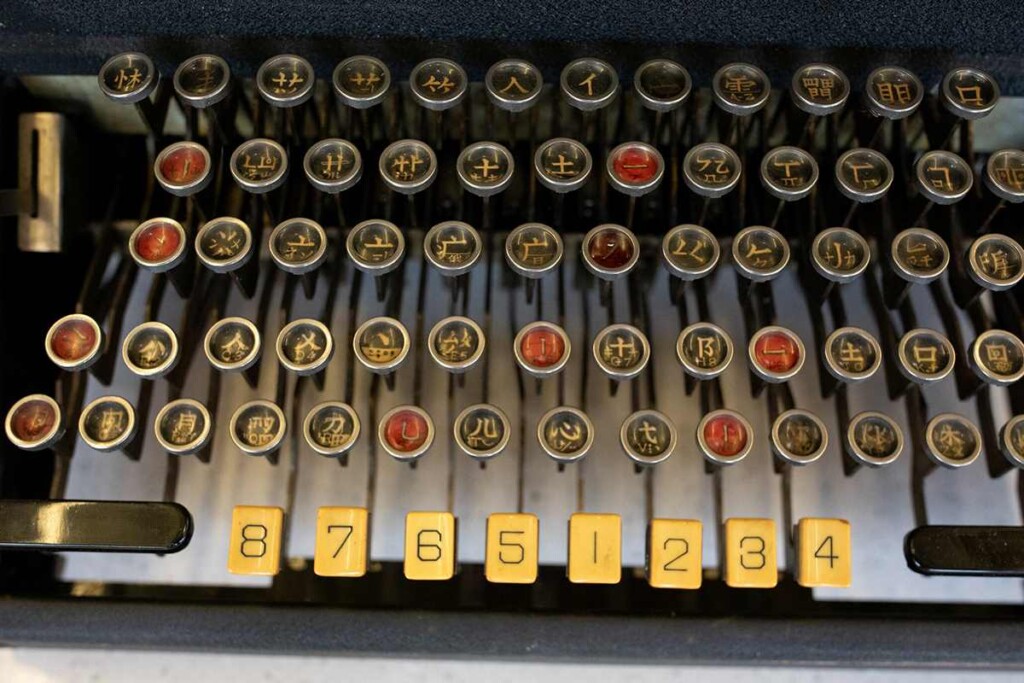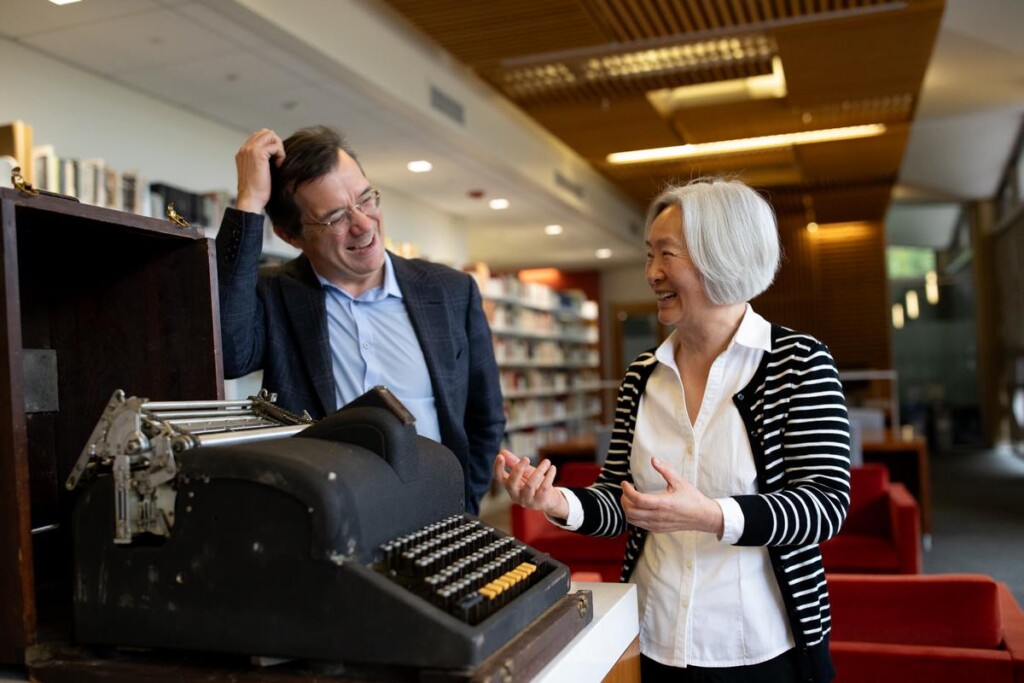 A close up of the Ming Kwai typewriter – credit Elisabeth Van Boch, supplied to GNN
A close up of the Ming Kwai typewriter – credit Elisabeth Van Boch, supplied to GNNA Stanford scholar has been rewarded for his work documenting Chinese computing by winning his university the chance to purchase the only known prototype of the first-ever Chinese typewriter after it was found in a basement.
Receiving offers through Facebook and Reddit from museums and institutions around the world, New Yorker Jennifer Felix and her husband quickly became overwhelmed and astonished by the response to their basement discovery.
“Is it even worth anything? It weighs a ton!” Felix’s husband wrote along with pictures of the “Ming Kwai” typewriter.
As it happened, one of the commenters pointed the couple to a book by Standford history professor Thomas Mullaney called The Chinese Typewriter: A History. Inside, a whole chapter was dedicated to the 明快打字機 which Standford University Press write is typically just called by the first two characters which mean “bright” and “fast”—Ming Kwai.
The Ming Kwai was the first Chinese typewriter ever to include a keyboard. It was invented by Chinese-born author, translator, and cultural commentator Lin Yutang in the 1940s.
The whole notion that a language with around 80,000 written characters could somehow be adapted for use in a typewriter seems bonkers. Today, writing digital text with a keyboard or phone in Chinese works by typing Western letters corresponding to the sound of the character, for example “ming” and then selecting which ming, since there are several, is needed for the text.
A digital database wasn’t available in the 1940s, so incredibly, Lin created a mechanical hard drive.
“The depression of keys did not result in the inscription of corresponding symbols, according to the classic what-you-type-is-what-you-get convention, but instead served as steps in the process of finding one’s desired Chinese characters from within the machine’s mechanical hard drive, and then inscribing them on the page,” Mullaney wrote in his book.
The Ming Kwai’s keys contain a mixture of characters and components found in many different Chinese words.
For example, in the center of the bottom row, the left-most keys between the two red ones are “er” and “xin,” both of which are characters themselves, but also can be component to larger, more complex characters. Xin, for example, means “heart” but when placed below “ni” forms the character “nin” which is a formal way to address someone.
YOU MAY ALSO LIKE: Hobbyist Restores Steam Locomotive to Pristine Condition–Puffs Down the Tracks for the First Time in 44 Years
The post-war Chinese typist would depress a key in the top row, triggering a rotation in the central mechanical database that would bring a certain number of common characters into view in a part of the typewriter called the “eye”. depressing a key in the middle row would trigger a second rotation corresponding to the first, and bring up another set of characters containing both component parts, and so one to the bottom row.
 History professor Thomas Mullaney and Zhaohui Xue, curator of Chinese studies examine the Ming Kwai typewriter – credit Elisabeth Van Boch, supplied to GNN
History professor Thomas Mullaney and Zhaohui Xue, curator of Chinese studies examine the Ming Kwai typewriter – credit Elisabeth Van Boch, supplied to GNNWithin the “eye” lay a final selection of characters containing the components selected for on each row, and by pressing one of the numbered keys, the character would be printed onto the page. Ingenious, to say the absolute minimum.
“In 1947, the Carl E. Krum Company built what is believed to be the sole prototype of Lin’s invention,” Stanford press wrote. “A year later, in debt and unable to generate interest in mass producing his machine, Lin sold the prototype and the commercial rights to the Mergenthaler Linotype Company, where Felix’s grandfather worked as a machinist.”
OTHER EARLY TECHNOLOGICAL RELICS: You Can Buy the Recording Console the Beatles Used to Make Their Iconic Album ‘Abbey Road’
With the help of a foundation established by two Americans of East Asian heritage, Stanford University was able to acquire the Ming Kwai and pay for its maintenance, but Mrs. Felix felt that Stanford were the most suitable custodians of the machine, since it was Mullaney’s book that helped clue her in on what it was she and her husband found in their basement.
“I didn’t want this unique, one-of-a-kind piece of history to disappear again,” she said.
SHARE This Brilliant Invention That Heralded The Dawn Of Chinese Computing…
Source link

